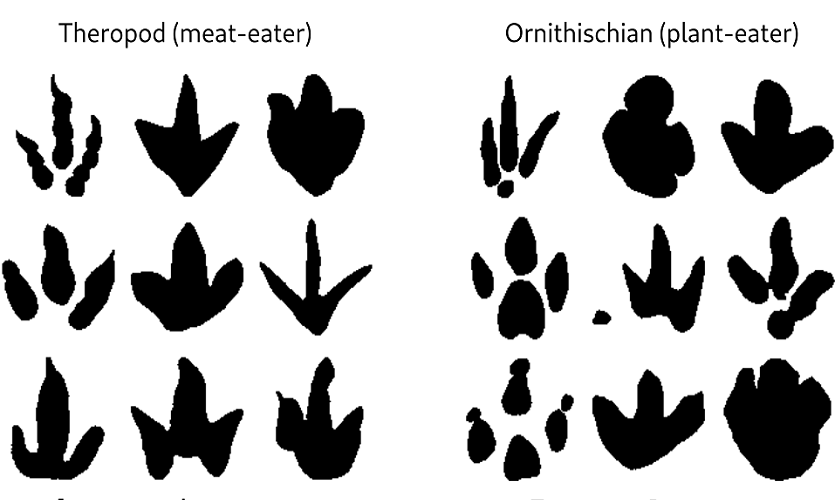Tyrannosaurus or Hadrosaur: How well can AI identify dinosaur footprints?

We all know the difference between history’s most fearsome predator and the duck-billed plant muncher.
But for thousands of scientists and amateur palaeontologists, all they usually have to look at are fossilised footprints, and indistinct ones at that.
A new study by scientists from Liverpool John Moores University, UK, and the University of Queensland, Australia, represents the very first use of artificial intelligence to identify fossil tracks.
Published in the Royal Society Interface, the study is concerned with a perplexing and long-standing problem: the distinction between three-toed tracks made by theropods (meat-eating dinosaurs) like Tyrannosaurus and ornithischians (plant-eating dinosaurs).
Meat eaters typically show slender digits equipped with sharp claws, and the foot is more asymmetric. Plant-eaters, in contrast, tend to have broader digits terminating in blunt hoofs. However, many tracks are somewhere in-between these morphologies, and any combination of features is possible.
A famous example of this classification problem is Lark Quarry in Queensland, Australia, famous as the scene of the world’s only dinosaur stampede.
“Scores of footprints at Lark Quarry suggest that a mixed group of small dinosaurs were running away, a panic that was apparently triggered by the presence of the trackway of a very large meat-eating dinosaur,” explains Dr Peter Falkingham, reader in vertebrate biology at LJMU.
“At least, that’s the original theory proposed but subsequent researchers suggest the stampede was triggered by a plant-eating hadrosaur.”
“It’s a heated and ultimately unresolved debate, which we hope can finally be solved by AI – and be the first of many.”
The AI was trained on more than 1,300 outlines of tracks that have been relatively confidently identified as theropod or ornithischians by previous studies. After training, the AI was tested on 36 additional challenging tracks that were different from those included in the training set. The same training set was given to five humans that are established experts on dinosaur tracks.
“The results were astounding”, says lead author Jens Lallensack, of LJMU. “The AI outperformed all experts by a wide margin, miss-classifying only 11% of the tracks.”
When given the Lark Quarry tracks, the AI classified most tracks as plant-eater but one track was very different – and more like that of a meat eater.
However, the study authors, who were divided about the trackmaker’s identification before the study, concluded that more work is needed before the last word can be spoken on this issue.
But they agree that AI approaches may be decisive with greater data input
“The current approach uses track outlines, but these are subjective and lose 3D information of the complex footprint shapes,” said Dr Falkingham.
“We’d expect AIs may be trained on 3D models and even larger sample sizes, which would greatly increase their power and utility,” he said.


